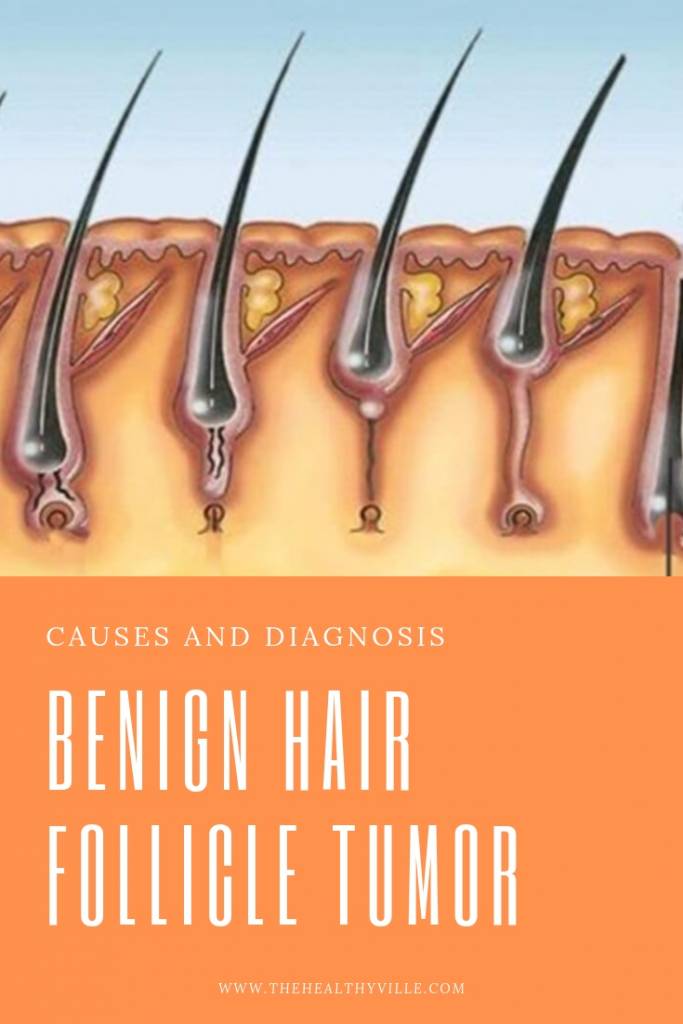Pilomatricoma is a hair follicle tumor which is benign, but if you have it, you still need to see its causes and diagnose it, in order to treat it on time.
In general, doctors relate multiple pilomatricoma with Steirnet’s disease or mionotic dystrophy or a family history with diseases of this type. It can also be related to other diseases.
Multiple pilomatricoma is a very rare lesion. In general, pilomatricoma is a benign tumor that leaves the hair follicle matrix cells and usually occurs alone. The multiple type is much more infrequent.
There are no conclusive data about the incidence of multiple pilomatricoma. Already there are large gaps in the data about the pilomatricoma in its typical form, because it often shows symptoms similar to those in other pathologies.
Despite the above, we know that multiple pilomatricoma represents between 2% and 3.5% of the total cases of pilomatricoma. They take place, mainly, when there is a family history of this type of disease.
What is hair follicle matrix tumor or multiple pilomatricoma?
Let’s first define the pilomatricoma as such. This is a benign tumor that is born in the hair follicle matrix and whose cause is unknown. It occurs mainly during childhood. Estimates show that it is equivalent to 10% of skin tumors that appear in children.
These types of tumors are located in the deep dermis and often spread to fat. When there are several tumors of this type, there is talk of multiple pilomatricoma. These cases are usually associated with inheritance, or with concomitant diseases.
So far only 40 cases of multiple pilomatricoma related to heredity and 30 cases associated with Steirnet’s disease or mionotic dystrophy have been described. In fact, for some, multiple pilomatricoma is only a symptom of such mionotic dystrophy.
Cases of other associated diseases have also been found, such as Gardner syndrome, Rubinstein-Taybi syndrome, medullary thyroid carcinoma, trisomy, mild coagulation disorders and sternal closure defects. Likewise, there are patients without associated anomalies.
The pilomatricoma presents as a hard nodule, usually the same color as the skin. It can appear at any age, but 60% of cases occur in the first decade of life. They are also slightly more frequent in the sixth and seventh decades of life. It predominates slightly in the female gender.
Where does it appear?
In more than half of the cases these nodules appear in the head and neck, but they can appear in any part of the body that has hair follicle. It has a bluish-reddish coloration. When you feel it, you feel the stony interior and the embossed surface.
Multiple pilomatricoma may appear before or after myotonic dystrophy or Steirnet’s disease. This is a muscular dystrophy that is transmitted genetically and that is characterized by the progressive deterioration of the voluntary muscles. It manifests more severely and quickly in each next generation.
In the multiple pilomatricoma there are several lesions that sometimes converge to each other and form a kind of plaque. The growth of the nodules is slow and asymptomatic. It is usually the same patient who notices his presence when palpating.
Read more: Reasons for Hair Loss in Women and 7 Remedies to Prevent It
Causes and diagnosis of the hair follicle tumor
Doctors believe that a complex of proteins or catenins cause multiple pilomatricoma. These are responsible for linking the actin of the cytoskeleton with the cadherins. Everything indicates that the final cause of this problem is the mutation of beta-catenin, which has been verified in 75% of the pilomatricomas.
The clinic of this disease is characterized by myotonia, which is the difficulty in relaxing the muscles. There is also weakness and muscular atrophy, as well as opacities in the lens, moderate mental retardation, early frontal alopecia, testicular atrophy, heart block and alterations in the electromyogram.
The diagnostic is fundamentally clinical. Sometimes doctors perform complementary studies to confirm this diagnosis, such as ultrasounds. Interrogatory, blood count and urine and feces tests confirm or rule out the presence of associated syndromes.
Other information
Sometimes the appearance of the nodules is fine, atrophic and wrinkled or pseudo-bullous. This occurs only in 2% of cases, often in young women with limb injuries.
Only very exceptionally tumors have a crusty appearance, similar to that of an ulcer. Doctors are familiar with only 11 cases of this type. In these cases we speak of perforating tumors.
The tumors of a simple pilomatricoma and a multiple pilomatricoma are identical. However, there are four cases in which multiple tumors present with macular atrophy or anetoderma. When confirming the presence of multiple pilomatricoma, a long-term follow-up should be maintained.
Don’t forget to SHARE all the info on the pilomatricoma hair follicle tumor with your friends and family on your social networks!

